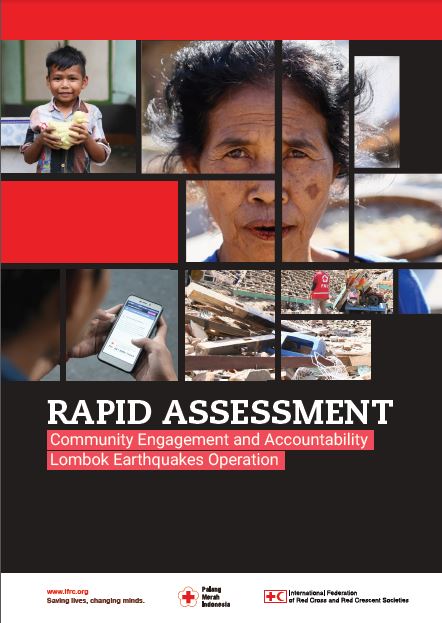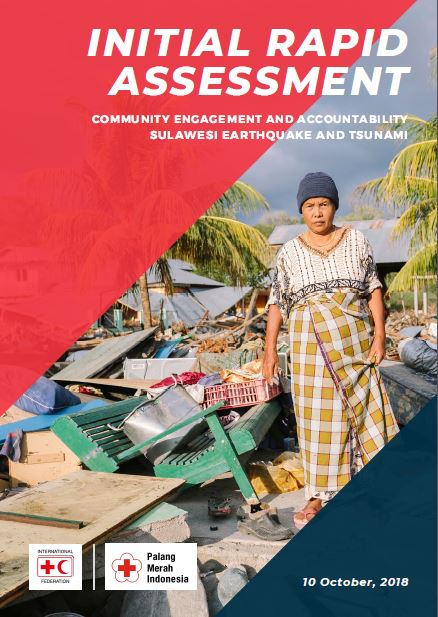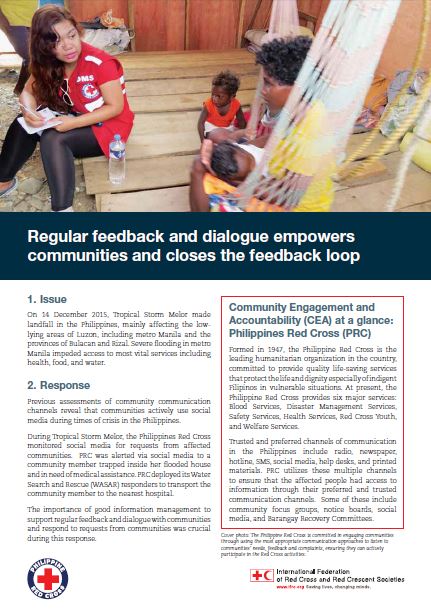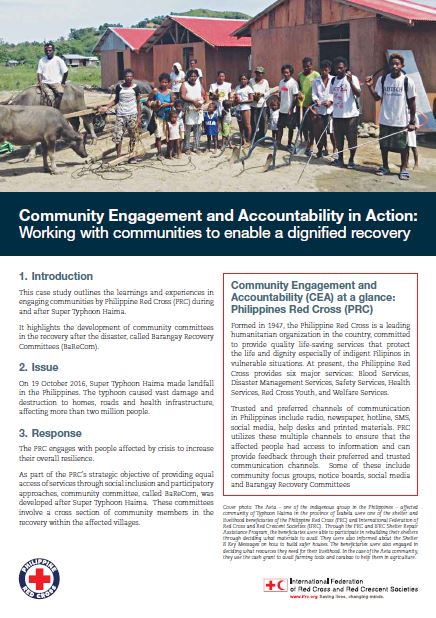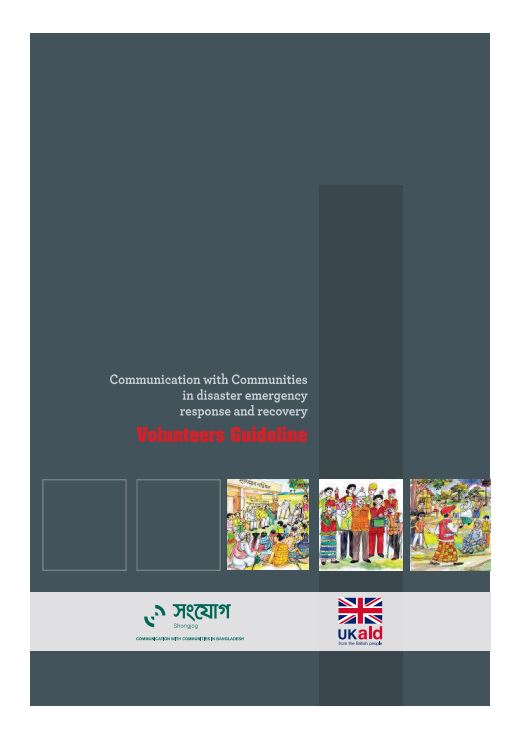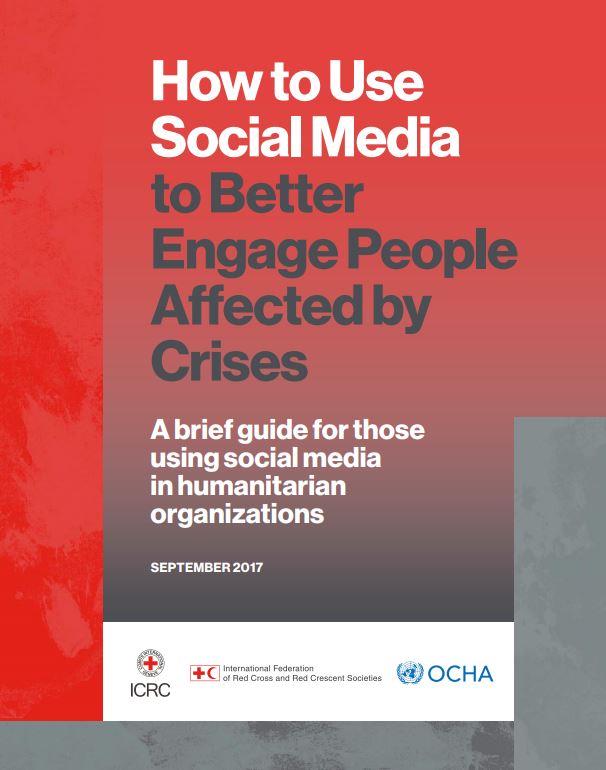Rapid Assessment: Community Engagement and Accountability – Lombok Earthquakes Operation
On 29 July 2018, a 6.4 magnitude earthquake struck off Lombok in the province of West Nusa Tenggara, Indonesia. A second, larger earthquake of 7.0 magnitude occurred on 5 August 2018, and was followed by thousands of aftershocks (data from Indonesia’s Agency for Meteorology, Climatology, Geophysics – Badan Meteorologi, Klimatologi dan Geofisika). The earthquakes affected 509,600 people across five districts including North Lombok, East Lombok, West Lombok, Central Lombok and Mataram city, with 560 deaths and 7,757 injuries. At least 396,000 people have been displaced in the series of devastating earthquakes. Seventy-five per cent of buildings in North Lombok were damaged or demolished including 577 school buildings (data from National Disaster Management Agency – Badan Nasional Penanggulangan Bencana).
The Indonesian Red Cross Society (known as Palang Merah Indonesia – PMI) conducted a rapid assessment on information, communication and accountability in response to devastating earthquakes on Lombok island, Indonesia. Some 257 people from severely affected communities including North Lombok, East Lombok and West Lombok took part in this assessment, held through focus group discussions and interviews. Information from government institutions and aid agencies also contributed to this report. The key findings include information needs of the affected people, their preferred communication channels, feedback mechanisms, and decision making process in the communities to consider for integration in the programme designs for this response.
![]()
Indonesian Red Cross Society: Integrating Community Engagement and Accountability in Emergency Operations [Low Resolution]
Community engagement and accountability (CEA) is critical to respond to immediate needs of the affected population in an emergency. It aims to put communities
at the centre of the operation and supports the role the members of affected communities as first responders. The recent earthquake response in Indonesia’s Aceh province in December 2016, by the Indonesian Red Cross Society: Palang Merah Indonesia (PMI), demonstrates how CEA was integrated within the emergency
operations.
This case study documents the key achievements and experiences of CEA in an emergency from the 2016 earthquake operation in Pidie Jaya, Aceh. It also features the recommendations for organisational policy change relating to an emergency operation to better prepare for and
respond to future crises in Indonesia and more broadly, in the region.
The case study is available for downloaded in high-resolution and low-resolution.
![]()
Indonesian Red Cross Society: Integrating Community Engagement and Accountability in Emergency Operations
Community engagement and accountability (CEA) is critical to respond to immediate needs of the affected population in an emergency. It aims to put communities
at the centre of the operation and supports the role the members of affected communities as first responders. The recent earthquake response in Indonesia’s Aceh province in December 2016, by the Indonesian Red Cross Society: Palang Merah Indonesia (PMI), demonstrates how CEA was integrated within the emergency
operations.
This case study documents the key achievements and experiences of CEA in an emergency from the 2016 earthquake operation in Pidie Jaya, Aceh. It also features the recommendations for organisational policy change relating to an emergency operation to better prepare for and
respond to future crises in Indonesia and more broadly, in the region.
The case study is available for downloaded in high-resolution and low-resolution.
![]()
Community Engagement and Accountability in Action: Working with communities to enable a dignified recovery
This case study outlines the learnings and experiences in engaging communities by Philippine Red Cross (PRC) during and after Super Typhoon Haima.
It highlights the development of community committees in the recovery after the disaster, called Barangay Recovery Committees (BaReCom).
![]()
Communication with Communities in disaster emergency response and recovery: Volunteers Guideline
Purpose: This guideline aims to enhance knowledge and capacity of the volunteers regarding communication with community in implementing disaster emergency response and recover activities.
Audience: trained volunteers of government, non-government and other agencies
![]()
How to use social media to better engage people affected by crises
The document serves as a brief guide for those using social media in humanitarian organizations.
In the past few years, the role of social media and digital technologies in times of disasters and crises has grown exponentially. During disasters like the 2011 Tohoku earthquake and tsunami, and the 2015 Nepal earthquake, for instance, Facebook and Twitter were crucial components of the humanitarian response, allowing mostly local, but also international actors involved in relief efforts, to disseminate lifesaving messages. They also offered affected communities a channel to seek help, reconnect with their families and provide feedback on the assistance received so that programmes could be adapted, when possible.
Existing studies show that digital communications channels can be critical before, during and after natural disasters, crises and armed conflicts, to save lives and reduce suffering (e.g. by disseminating of early warning messages and safety tips, helping people to reconnect with their loved ones, directing affected people to humanitarian services…).
However, the use of social media by humanitarian organizations to engage and communicate with (not about) affected people is, to date, still vastly untapped, and largely under researched and documented in terms of the provision of practical guidance, both thematically and technically, good practices and lessons learned. This brief guide, initiated by the International Committee for the Red Cross (ICRC) and the International Federation of Red Cross and Red Crescent Societies (IFRC), and developed with support from the Office for the Coordination of Humanitarian Affairs (OCHA), is a living document that aims to address this.
![]()
Community engagement and accountability: Good practices from around the world (2017)
This publication presents examples of community engagement and accountability initiatives being implemented by the Movement in both emergency and longer-term contexts. The work done in Africa, Americas, Asia, Europe and the Middle East stands testament to how community engagement and accountability is not only enabling ICRC and IFRC to better respond to the needs of the communities they serve but also in reducing the communities’ vulnerability and in building safer, more resilient communities. For further information, please see www.ifrc.org/CEA
![]()


